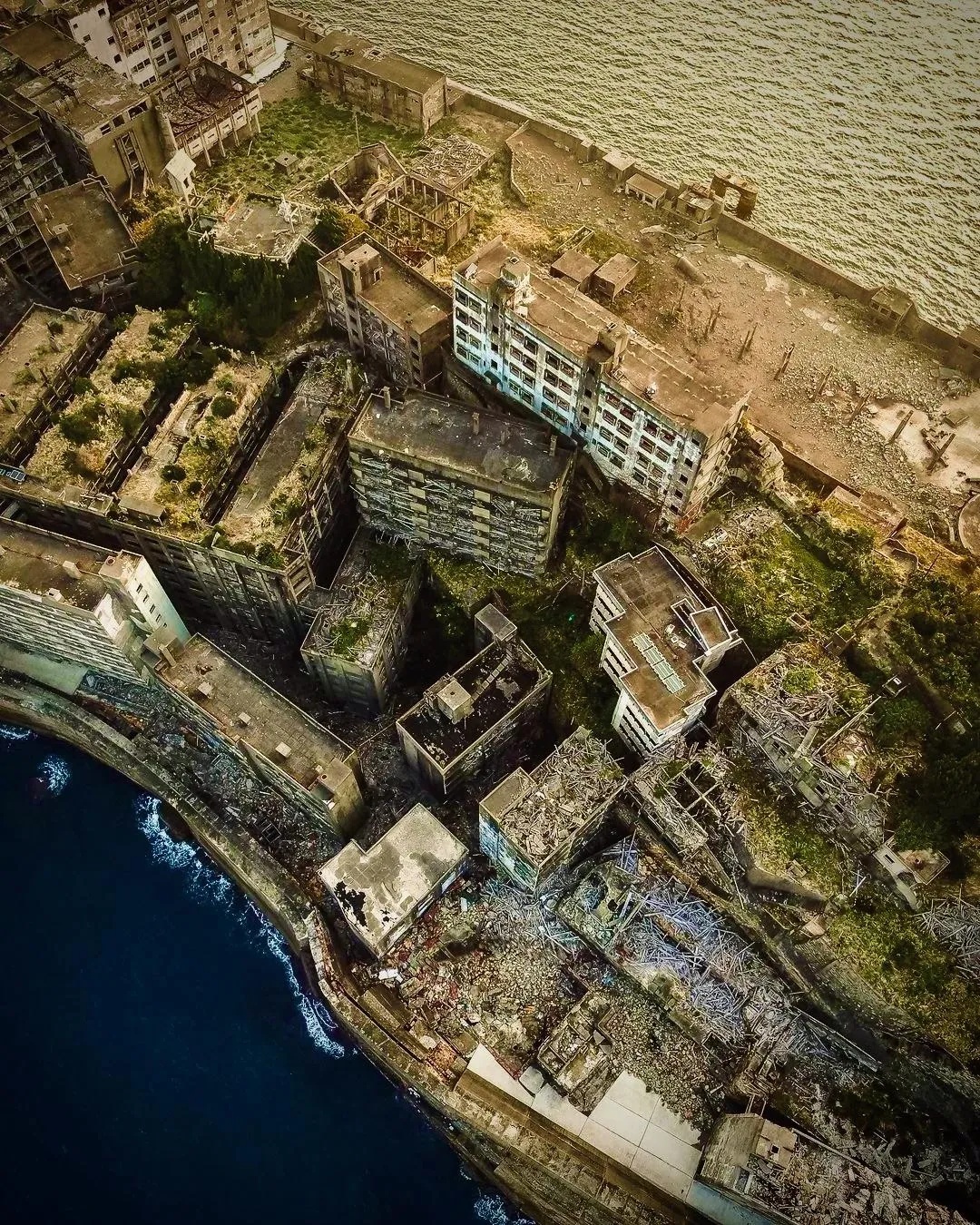Once the most densely populated spot on the planet, Gunkanjima now lies abandoned, a poignant reminder of its once-thriving past. Few places can match the unique and poignant history of this island.
Nestled off the coast of Nagasaki, this small yet fortress-like island is known by various names, including “Hashima” or “Battleship Island.” Surrounded by a protective seawall and marked by tightly packed structures, Gunkanjima stands silent and empty—a ghostly town left untouched for more than four decades.

In the early 1900s, the Mitsubishi Corporation spearheaded the development of Gunkanjima, recognizing its strategic location atop a rich coal deposit beneath the seabed. Over almost a century, the mine expanded extensively, delving deeper into the earth and beneath the seabed to extract coal vital for Japan’s industrial expansion. By 1941, this island, covering less than a square kilometer, was yielding an astounding 400,000 tonnes of coal annually. Unfortunately, a substantial portion of the labor force working in grueling conditions within the undersea mine comprised forced laborers from Korea.



The city that sprouted around the mine was as remarkable as the mine itself. To house the miners, ten-story apartment complexes were erected on this small rock, forming a complex high-rise network linked by courtyards, corridors, and staircases. With schools, eateries, and entertainment venues all enclosed within a protective seawall, the island gained the moniker “Midori nashi Shima,” meaning the island without greenery. Surprisingly, by the mid-1950s, it boasted a population of nearly six thousand residents, marking the highest population density ever recorded globally. However, this vibrant community met an abrupt end when the coal reserves ran dry.

After Mitsubishi closed the mine, the entire population vacated, leaving this island city deserted, surrendered to the forces of nature. The once lively apartments began to crumble, and for the first time, greenery sprouted in the once barren courtyards. Streets became strewn with debris, while the sea breeze whispered through the deserted buildings. Now, fifty years later, the island remains suspended in time, mirroring its state just after Mitsubishi’s departure—a ghostly reminder adrift in the sea.


From 1974 to 2009, access to the island was strictly forbidden to visitors. However, in recent times, this captivating site has been reopened for guided tours. Moreover, on July 5, 2015, the site received approval for inclusion on the UNESCO World Heritage list.

